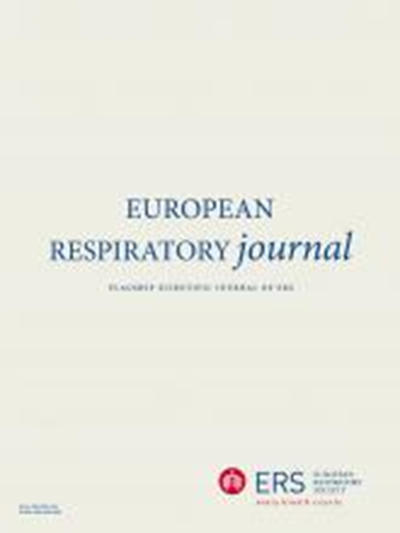大规模蛋白质组学分析识别急性呼吸窘迫综合征(ARDS)中不同的炎症表型:一项多中心前瞻性队列研究。
IF 21
1区 医学
Q1 RESPIRATORY SYSTEM
引用次数: 0
摘要
背景:ARDS期间的宿主反应是高度异质性的,导致治疗结果不一致。基于蛋白质组学的表型可以识别生物学和临床不同的表型,以指导精确治疗。方法在这项多中心队列研究中,我们采用靶向血清蛋白质组学的潜在类分析(LCA)来鉴定ARDS表型。在诊断后72小时内采集血清样本以获取早期剖面图。在外部队列中进行验证。途径富集评估分子异质性。使用基于机器学习的放射组学分析肺部CT扫描以探索表型差异。采用治疗加权逆概率(IPTW)校正Cox回归评估糖皮质激素和通气策略的异质性治疗效果(HTEs)。建立了多项XGBoost模型对表型进行分类。结果在1048例患者中,在两个独立的队列中鉴定并验证了三种炎症表型(C1, C2, C3)。具有较大比例不良/非充气肺室的C1型患者的90天死亡率、休克发生率和无呼吸机天数最高,其次是C3型,而C2型患者的预后最好(p<0.001)。表型C1的特征是强烈的先天免疫激活、细胞因子扩增和代谢重编程。表型C2表现出免疫抑制、组织修复增强和抗炎代谢恢复。C3型,包括最年长的患者,反映了中等免疫激活和部分免疫消退的中间状态。糖皮质激素治疗和较高的呼气末正压通气改善了C1患者90天的预后,但增加了C2患者的死亡率(P相互作用<0.05)。最后,一个12生物标记分类器可以准确地区分表型。我们鉴定并验证了三种基于蛋白质组的ARDS表型,它们具有不同的临床、放射学和分子特征。他们的不同治疗反应突出了生物标志物驱动的ARDS精准医疗策略的潜力。本文章由计算机程序翻译,如有差异,请以英文原文为准。
Large-scale proteomic profiling identifies distinct inflammatory phenotypes in Acute Respiratory Distress Syndrome (ARDS): A multi-center, prospective cohort study.
BACKGROUND
Host responses during ARDS are highly heterogeneous, contributing to inconsistent therapeutic outcomes. Proteome-based phenotyping may identify biologically and clinically distinct phenotypes to guide precision therapy.
METHODS
In this multicenter cohort study, we used latent class analysis (LCA) of targeted serum proteomics to identify ARDS phenotypes. Serum samples were collected within 72 h of diagnosis to capture early-phase profiles. Validation was conducted in external cohorts. Pathway enrichment assessed molecular heterogeneity. Lung CT scans were analyzed using machine learning-based radiomics to explore phenotypic distinctions. Heterogeneous treatment effects (HTEs) for glucocorticoids and ventilation strategies were evaluated using inverse probability of treatment weighting (IPTW) adjusted Cox regression. A multinomial XGBoost model was developed to classify phenotypes.
RESULTS
Among 1048 patients, three inflammatory phenotypes (C1, C2, C3) were identified and validated in two independent cohorts. The phenotype C1 with a larger proportion of poorly/non-inflated lung compartments had the highest 90-day mortality, shock incidence, and fewest ventilator-free days, followed by C3, while C2 patients had the best outcomes (p<0.001). Phenotype C1 was characterized by intense innate immune activation, cytokine amplification, and metabolic reprogramming. Phenotype C2 demonstrated immune suppression, enhanced tissue repair, and restoration of anti-inflammatory metabolism. Phenotype C3, comprising the oldest patients, reflected an intermediate state with moderate immune activation and partial immune resolution. Glucocorticoids therapy and higher positive end-expiratory pressure (PEEP) ventilation improved 90-day outcomes in C1 but increased mortality in C2 patients (P interaction<0.05). Finally, a 12-biomarker classifier can accurately distinguish phenotypes.
CONCLUSIONS
We identified and validated three proteome-based ARDS phenotypes with distinct clinical, radiographic, and molecular profiles. Their differential treatment responses highlight the potential of biomarker-driven strategies for ARDS precision medicine.
求助全文
通过发布文献求助,成功后即可免费获取论文全文。
去求助
来源期刊

European Respiratory Journal
医学-呼吸系统
CiteScore
27.50
自引率
3.30%
发文量
345
审稿时长
2-4 weeks
期刊介绍:
The European Respiratory Journal (ERJ) is the flagship journal of the European Respiratory Society. It has a current impact factor of 24.9. The journal covers various aspects of adult and paediatric respiratory medicine, including cell biology, epidemiology, immunology, oncology, pathophysiology, imaging, occupational medicine, intensive care, sleep medicine, and thoracic surgery. In addition to original research material, the ERJ publishes editorial commentaries, reviews, short research letters, and correspondence to the editor. The articles are published continuously and collected into 12 monthly issues in two volumes per year.
 求助内容:
求助内容: 应助结果提醒方式:
应助结果提醒方式:


